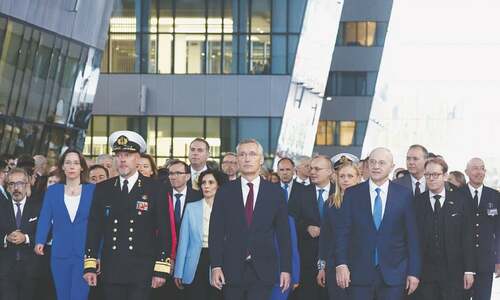BRUSSELS: The NATO military alliance commemorates the signing of its founding treaty in Washington on Thursday, marking 75 years of the alliance’s existence.
Here are some statistics regarding the group that was created during the Cold War and given new life by Russia’s invasion of Ukraine.
Increased membership from 12 to 32
In 1949, a small group of 12 nations signed the North Atlantic Treaty as the US, Canada, and much of western Europe banded together to confront the Soviet Union, their erstwhile ally in World War II.
Turkey and Greece, two frequently uneasy neighbors, became members in 1952; West Germany followed three years later.
Following the conclusion of the Cold War, NATO underwent multiple rounds of expansion that resulted in the addition of Poland and the former Baltic nations, expanding its border with Russia.
Nordic neighbors Sweden and Finland reversed long-standing non-alignment policies following Moscow’s invasion of Ukraine in 2022.
9/11
The September 11, 2001 attacks on the United States were the sole occasion on which NATO invoked its Article Five collective-defence clause, which states that an assault on one member is considered an attack on all.
As a result of the events of 9/11, NATO became involved in Afghanistan and stayed there until 2021, when the US-led withdrawal disastrously allowed the Taliban to retake power.
2% of GDP
Allies of NATO decided to set aside two percent of their GDP for defense after Russia annexed Crimea from Ukraine in 2014.
After Moscow began its full-scale invasion of its neighbor in 2022, that target was increased to have two percent as a minimum.
France’s precarious alliance
No nation has ever left NATO, although France did leave the organization’s military command structure for over 43 years after then-president Charles de Gaulle left in 1966, citing US dominance as his reason.
Only former president Nicolas Sarkozy reversed the decision, which saw NATO relocate its headquarters from Paris to Brussels, in 2009.
However, France and NATO continue to have occasionally tense relations.








